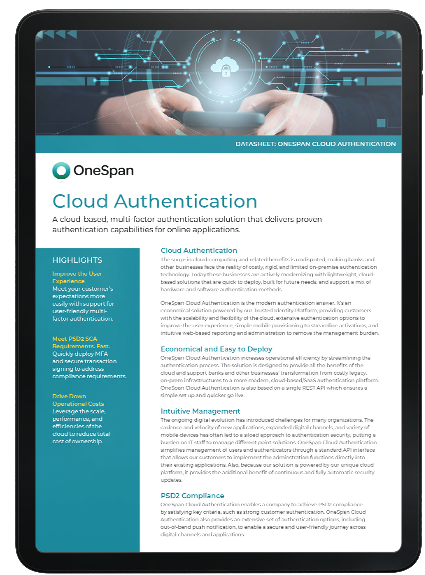SaaS Authentication Success Stories: How 3 Organizations Improved Customer Experience

In June 2020, the U.S. Federal Bureau of Investigation stated in a public service announcement that “Studies of US financial data indicate a 50% surge in mobile banking since the beginning of 2020.” The increase in mobile use, which in the wake of the pandemic is happening around the world, presents an irresistible target for fraudsters. It is no surprise then that Forbes reported a 350% increase in the number of phishing sites in Q1 2020. It is in this context that financial institutions (FIs) are modernizing their authentication solutions, and this was already a priority for many FIs. According to a survey conducted by Pulse Q&A for Microsoft conducted in October 2019, 85% of respondents intended to implement or expand multi factor authentication (MFA). High among their considerations as they do so is the customer experience of their mobile solutions, and financial institutions are finding success with SaaS multi-factor authentication.
One of the trends we are seeing is how quickly banks and other FIs are moving as they modernize their authentication solutions. In this blog, we share three recent stories of organizations that experienced this firsthand as they deployed modern SaaS authentication to improve their customer experiences and strengthen security.
Japanese Bank Expands Mobile Functionality and Boosts User Experience
In November 2019, this Japanese bank released their mobile banking application. At first, the functionality of the application was limited and only allowed users to check their balance. Further, the legacy authentication process used in the online channel did not provide a satisfactory mobile experience. Users would receive a one-time password (OTP) through email and input the password in the web portal. This experience did not translate well to mobile. In addition to modernizing the mobile authentication experience, the bank also wanted to implement Strong Customer Authentication and transaction data signing to securely enable money transfers through the application.
The timeline for this project was exceptionally tight. The bank needed to release the updated version of their app in three months or less. Typically, integrating a new authentication solution into an existing app and deploying the on-premises authentication server to support it could take upwards of a year to complete. To expedite integration and deployment, the bank looked for a SaaS solution that would enable them to easily scale and add new authentication technologies.
Now that it is integrated, users no longer receive their OTP through email. They can authenticate by receiving their OTP in-app or leverage fingerprint biometrics. This has created a secure and convenient customer experience while expanding the functionality of their mobile banking app.
Secure Cloud Authentication for Norwegian Banks
This fintech organization offers Norwegian banks a secure and cost-effective internet security solution for identification and electronic signatures. To authenticate, users relied on hardware authenticators. Although these authenticators provide strong security, user feedback revealed a desire for an authentication software solution that would allow them to leverage their mobile devices. The organization decided to launch a new mobile app to authenticate users with a focus on improving the customer experience through biometrics.
The organization is partially owned by each and every bank in Norway, and they all make use of this service. For that reason, the organization could not consider an on-premises authentication solution, because this would require each Norwegian bank to provision and deploy a new authentication server on-premises. By leveraging cloud authentication, the client banks could easily adopt the authentication app without this obstacle. With the app deployed and banks beginning to adopt its use, users gained access to MFA with fingerprint biometrics and push notifications. The new experience proved more convenient, and those who downloaded the authentication app could safely retire their hardware authenticators.
Healthcare Organization Introduces Cloud Authentication to Reduce Costs
This healthcare software development company recently modernized their security strategy by adopting cloud authentication. The company sells an Electronic Prescription of Controlled Substances (EPCS) solution that helps doctors and healthcare professionals connect their patients with the regulated medications they need. Due to both the privacy concerns of medical information and the hazardous potential of misusing the medication, authentication is an extremely important component of the solution.
The company migrated from an on-premises implementation to a cloud authentication solution to achieve strong customer authentication and regulatory compliance. In addition, SaaS authentication made it possible to avoid the costs associated with purchasing, supporting, and maintaining the servers to enable authentication. Finally, the company wanted to integrate an authentication process into their existing product using a solution that makes it easy to deploy, evaluate, and verify compliance with all regulations.
SaaS-based MFA for Quick Wins and Efficiency
As your organization plans authentication investments for 2021, consider the advantages of a SaaS based MFA solution. Beyond the benefits explored here, cloud authentication offers an opportunity for quick wins and immediate efficiency gains. Perhaps most important, it provides a path for advanced authentication factors such as biometric fingerprint authentication - which according to Javelin Research is the most desired authentication method for online and mobile banking.








